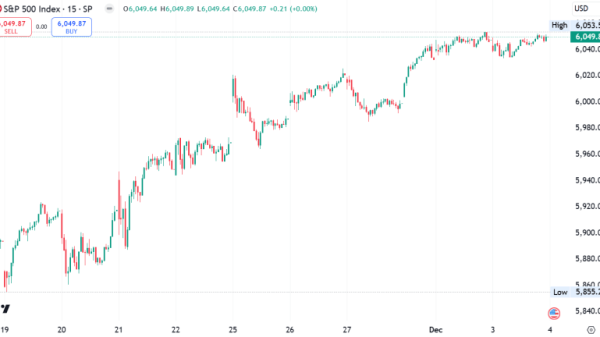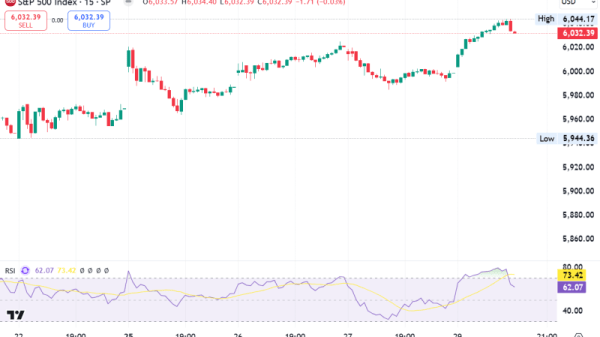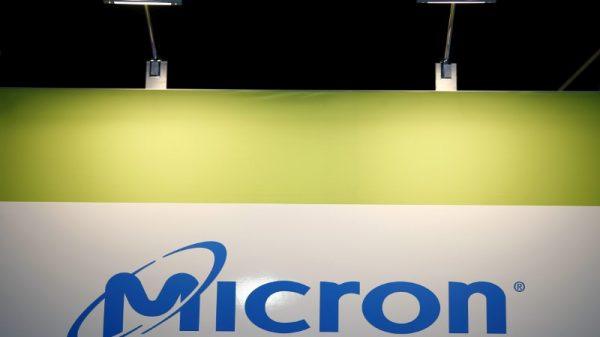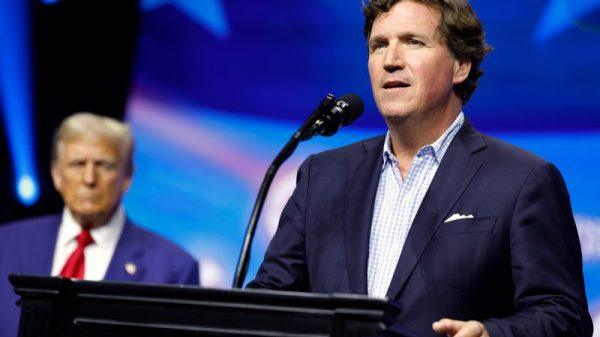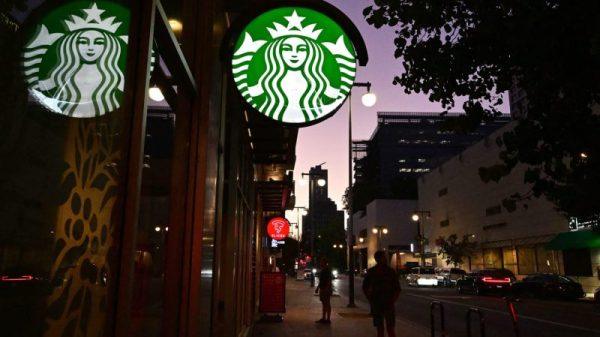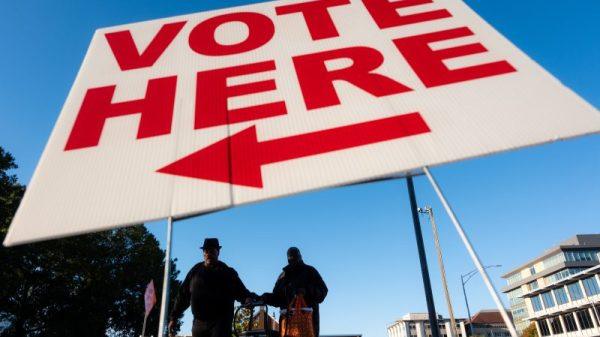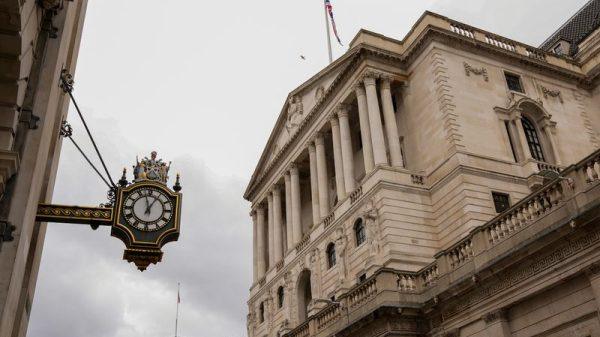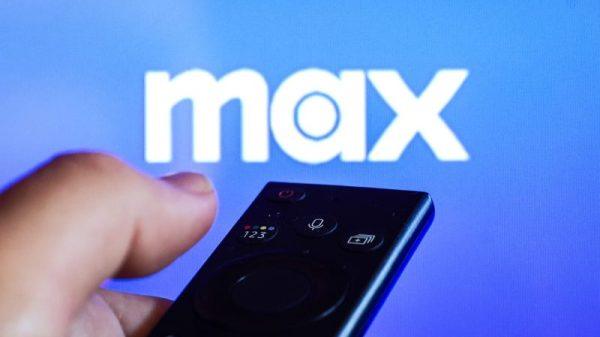BNP Paribas (OTC:BNPQY) (BNP.PA) has announced a robust performance for the third quarter of 2024, with a net income group share of €2.9 billion, marking a 5.9% increase year-on-year. The bank’s revenues also saw a rise of 2.7% compared to the same quarter in the previous year.
CEO Jean-Laurent Bonnafe highlighted significant growth in Corporate and Institutional Banking (CIB) and a strong outlook for the coming years, with anticipated improvements driven by favorable market conditions and strategic initiatives, including the acquisition of AXA Investment Management.
Key Takeaways
Net income group share increased by 5.9% year-on-year to €2.9 billion.
Revenues grew by 2.7% compared to Q3 2023, with CIB revenues up by 9%.
€655 million in cost savings achieved year-to-date; €1 billion total savings targeted for the year.
Core Equity Tier 1 ratio remains robust at 12.7%.
Positive trends in Eurozone commercial and personal banking; Insurance and Asset Management segments also performed well.
The bank aims for over 3% growth in 2025 and 2026, particularly in the French and Belgian markets.
Company Outlook
BNP Paribas anticipates continued revenue growth in 2025 and 2026, with a favorable interest rate environment and market conditions.
The acquisition of AXA Investment Management is expected to enhance synergies within the Investment Solutions division and across the group.
Bearish Highlights
Equities and Prime Services division underperformed in Q3, despite a strong year-to-date performance.
High short-term rates have negatively impacted net interest income and deposit volumes in French retail banking.
Concerns raised about modeling challenges for Arval’s leasing and service margins due to normalization of used car sales.
Bullish Highlights
Customer deposits and off-balance sheet assets grew by 4.4% year-on-year.
Insurance and Asset Management revenues increased by 4.9% and 7.9%, respectively.
Personal Finance revenue rose by 1.5%, benefiting from a favorable interest rate environment.
Misses
A 5.7% decline in specialized businesses was reported.
Arval faced a significant drop in used car prices, although it achieved organic business growth.
Q&A Highlights
Tariq El Mejjad from Bank of America highlighted the disappointing performance of the Equities and Prime Services division in Q3.
Azzurra Guelfi from Citi questioned French retail banking dynamics, with Bonnafe addressing the impact of high short-term rates.
Giulia Miotto from Morgan Stanley asked about the U.K. motor finance market’s impact on BNP, with minimal exposure reported.
Delphine Lee from JPMorgan sought clarification on cost savings and the 2026 outlook, with an additional $200 million in cost savings expected in Q4.
In summary, BNP Paribas’ earnings call reflected a strong financial performance, with significant year-on-year growth in net income and revenues. The bank’s strategic focus on cost-saving measures and capital allocation, as well as the integration of AXA Investment Management, positions it for continued success in the upcoming years. Despite some challenges in specialized businesses and the impact of interest rates on retail banking, BNP Paribas maintains a positive outlook for its future growth, particularly in the Eurozone markets.
InvestingPro Insights
BNP Paribas’ strong financial performance in Q3 2024 is further supported by data from InvestingPro. The bank’s market capitalization stands at an impressive $77.17 billion, reflecting its significant presence in the banking industry. With a P/E ratio of 7.65, BNP Paribas appears to be trading at a relatively attractive valuation compared to its peers.
InvestingPro Tips highlight that BNP Paribas has been aggressively buying back shares, which aligns with the company’s focus on capital allocation mentioned in the earnings call. This strategy could potentially boost shareholder value and support the stock price. Additionally, the bank has raised its dividend for 4 consecutive years, demonstrating a commitment to returning value to shareholders. This is particularly noteworthy given the bank’s strong financial position and growth outlook for 2025 and 2026.
The revenue growth of 3.14% over the last twelve months, as reported by InvestingPro, corroborates the 2.7% year-on-year revenue increase mentioned in the article. This consistent growth trajectory supports CEO Jean-Laurent Bonnafe’s optimistic outlook for the coming years.
It’s worth noting that InvestingPro offers 11 additional tips for BNP Paribas, providing investors with a more comprehensive analysis of the company’s financial health and market position. These insights can be particularly valuable for those looking to make informed investment decisions based on a broader set of metrics and expert observations.
Full transcript – BNP Paribas SA (BNPQF) Q3 2024:
Operator: Good afternoon, ladies and gentlemen, and welcome to the presentation of the BNP Paribas Third Quarter 2024 Results with Jean-Laurent Bonnafe, Group Chief Financial Officer; and Lars Machenil, Group Chief Financial Officer. For your information, this conference call is being recorded. Supporting slides are available on BNP Paribas IR website invest.bnpparibas.com. [Operator Instructions] I would like now to hand the call over to Jean-Laurent Bonnafe, Group Chief Executive Officer. Please go ahead, sir.
Jean-Laurent Bonnafe: Thank you. So, good afternoon ladies and gentlemen. Welcome to the presentation of our third quarter ’24 results. As usual, at the end of the presentation, Lars and I will be pleased to take your questions. So, moving to the core of the presentation with Slide 3. Our net income group share reached € 2.9 billion in the third quarter of 2024. This was a very strong quarter for BNP Paribas, driven by good performance across our operational divisions. Our revenues are up 2.7% compared to third quarter ’23 on a distributable basis. All in all, an outstanding quarter for CIB which was up 9% year on year with global markets leading the way. Meanwhile, CPBS generated stable revenues, excluding revenues from used cars disposals At Arval. We see positive momentum in the commercial and personal banking activities in the Eurozone. France being a good illustration with a 1.6% increase in revenues in third quarter ’24 versus third quarter ’23. I will get back to this in the next slide. IPS was a strong performer, up 4.9%, supported by insurance and asset management. This quarter, operating costs were up 1.7%. Cost growth was efficiently targeted as supporting our development and we were able to sustain positive jaws of one point for the quarter. We’re on track to deliver promised operational efficiency measures. € 655 million of savings have been achieved as of the end of September, with a further € 345 million expected in the fourth quarter, adding up to € 1 billion for the full year ’24. Our gross operating income is up 4.2% year on year at € 4.7 billion and our operating income up 4.1% at almost € 4 billion as an illustration of the performance of the quarter. Moving on to the cost of risk, it remains stable at 32 bps and demonstrates the strength of our credit portfolio through the cycle. As a result, in third quarter our net income reached a solid level of € 2.1 billion, up 5.9% year on year and our EPS was up plus 11.2%. Our financial structure is strong with the core Equity Tier 1 at 12.7% which includes a 30 bps impact due to the prudential consolidation of Arval on July 1 as previously announced. On second half of ’24, planned securitization program will be positioned in fourth quarter ’24. The main part of the capital redeployment of Bank of the West is now completed with the project of acquiring AXA Investment Management by Cardif, which would strategically reposition IPS within the Group. Overall we have redeployed 150 bps of which 60 bps were returned to shareholders in the form of share buybacks and 90 bps were reinvested in a disciplined manner within the Group in activities with high potential for value creation. 40% of that 90 bps was devoted to IPS businesses, insurance, asset management and wealth management, out of which 25 bps is related to the Cardif AXA EM project with its major strategic initiative focused on fee-driven capitalized businesses. It will boost the IPS division, drive integration across its various businesses and significantly increase the potential for synergies between them. It will also strengthen synergies with CIB and CPBS, further enhancing our already impressive ability to cross sell and enhance our share of clients spend. We will hold a deep dive dedicated specifically to this measured strategic initiative after the closing. Moving on to Slide 4. We confirm our ’24 trajectory from revenue, growth effect, cost of risk and net income perspective. Let me share with you the analysis of our business drivers. CIB will continue to gain market share while retaining a balanced allocation of capital. The very good third quarter results illustrate this. Within CPBS, the outlook for commercial banks in the Eurozone is improving, thanks to a favorable shift in the interest rate environment related to the steepening of the yield curve, the stabilization of loans and deposits and the gradual reduction of the impact of headwinds on business growth. We’re already seeing a slight positive trend in third quarter which should continue in fourth quarter than in ’25 and ’26. In this sense, third quarter constitutes an inflection point. In ’25 the headwinds will no longer bite into business growth and in ’26 all other things being equal, we should benefit from tailwinds. Moving to Arval, it has experienced a major impact from the normalization of used car prices which is greater this quarter and is likely to last until fourth quarter ’25. However, Arval is intrinsically doing well with a sustained growth in volumes supporting a significant increase in financial and service margins. Within IPS, third quarter results illustrate a strong momentum for asset management and insurance. With that, I would like now to hand over to Lars, who will take you through the Group and divisional results.
Lars Machenil: Thank you, Jean. Very fine afternoon, ladies and gentlemen. If I may, I suggest that you move to Slide 7, which contains more details on the P&L and a clear demonstration of our solid operating performance this quarter. As already mentioned by Jean-Laurent, our performance in terms of gross operating income is quite strong, up 4.2% as well in terms of operating income at almost € 4 billion. This can also be seen in the bottom line being up 5.9%, clocking in € 2.9 billion, which marks a nice progression year-on-year. Actually, the level of net income in the third quarter is the highest that BNP Paribas has recorded in the third quarter. Now, before looking at the solid performance across divisions, a quick review of the exceptional items this quarter. Basically there is no review. They are quite limited and similar to last quarter or a year ago. And so this is a further illustration of the strong intrinsic quality of our results. If with this, I can ask you to move to Slide 8 and review the performance by our operating divisions and you will see an overall performance that confirms our trajectory. So, overall group revenues up 2.7% year-on-year. So if we walk to the divisions, first of all, strong revenue growth at CIB, up 9% year-on-year and driven by a very strong performance in each of the three business lines. And this leveraging on deep client relationships and an increase in demand for financing. Global banking, a leader in EMEA is up 5.9% supported by capital markets activities which are at the heart of the Group’s originate and distribute strategy. And if you look at this capital market store, which is really close to what the corporations need, it is up 12.4% in EMEA. We are already positioning ourselves in what we believe is a fast growing market as corporate client financing needs, for example, for climate, technology transition, bringing back technologies and the likes and these financing needs are unprecedented. We also believe the potential acceleration of the capital markets union or elements thereof in Europe offers strong growth opportunities both for Europe and for ourselves to assist in it. So also if we stay within the department, there is a solid 5.7% increase from transaction banking in the Americas driven by trade finance and a good performance by cash management in Asia. If we then go to the second division within CIB. Global markets activities were up 12.4% driven by a strong performance on one hand in Equity and Prime services, up 13.2% and in particular was strong in Prime and stable in overall Equity derivatives. So that’s EPS. Then Secondly, the performance in FICC was also robust, up 11.8% thanks to strong activities and basically all letters of FICC may be bar commodities, so strong in credit rates and forex. Then the third one is securities services, up 6.6% and this driven by a sustained growth in net interest margin as well as higher client cash balances. So good business acquisitions in security services was demonstrated by new mandates, higher outstanding and our ability to assist clients through market volatility. So that’s the first division. If you now look at the second one, CPBS. It had a stable quarter excluding the negative impact of the used car prices with Arval. So if we start within CPBS, so you have two main divisions and if we start with the commercial and personal banking businesses in the Eurozone, the third quarter showed an improvement as mentioned by Jean-Laurent. We are currently at a tipping point as on one hand side deposits stopped moving and loans to individuals show positive trends. That’s one thing. And second thing, the headwinds are becoming less punitive for business growth as you can see. I mean I’m not going to comment it, but if you browse to Slide 21, you can clearly see that it’s tapering off from a € 150 million impact negative the first quarter and it’s coming down to € 63 million in the third quarter. And so if I look at it, I take the first nine months for our commercial banks in the Eurozone, they are basically up 2.1%. If I look through these headwinds and these headwinds, as I said, they will basically be gone and out of the base going forward. And the 2.1%, if I look specifically at the third quarter, it is up 0.8%. And we saw some improvements in the net interest revenues in fees in France as an illustration of the quality of our franchise. And we also saw it in Italy and Luxembourg. So overall the pre-tax income of [Azure Bank] increased by 10.8% with a positive jaws effect and a low level of cost of risk at 19 basis points. So all this, what you see in the commercial and personal banking in the Eurozone is biding very well to crystallize the pivot and deliver growth going forward. There is one point of attention, that is Belgium where we have been adapting to, I would call, a significant market disruption that could continue for a few quarters, and this in particular witnessed through intense competition on loans and deposits that is weighing on margins. From our stance, our commercial strategy, created in response to the market reaction to state bonds which are maturing in September or have matured in September, is to provide customers with medium-term certainty rather than matching the short-term high rate products in the market. And this, on one hand, preserves margins for the bank and retains and protects clients, especially in an environment of declining base rate environment. So this strategy contributed to a 4.4% growth in customer deposits and off balance sheet assets at the end of the third quarter compared to a year ago. So that basically synthesizes the commercial banks. And if we now go to the second part in it, which is a specialized businesses. They are moving downwards 5.7% year-on-year. If we look at it in detail, if we start with Arval. We are adapting to the continued normalization of used car prices. These are basically down 35% to used car prices, year-on-year. However, the organical business growth is doing well and is basically up 15% with financial and service margins continue to grow at a healthy pace. The expansion of the finance fleet will keep on supporting organic growth with further gains in individual customer fleet added by the development of partnerships with automakers as you are well aware. If you now move to Personal Finance, we see positive trends in revenues in the core parameter. So, the core parameter is up 1.5% year on year as illustration of the successful implementation of the strategic plan. The business could continue to benefit from the favorable shift in the interest rate environment with the resulting decrease in refinancing costs and a positive effect on volumes. Last, a stable performance this quarter from new digital businesses and personal investments. So that’s two out of three. Let’s look at IPS. As you seen, the division performed very well this quarter with revenues up 4.9% driven in particular by asset management and insurance. If we look at asset management up 7.9% driven by a strong growth in assets with a supportive market environment and strong inflow driving fees up. Then there is insurance, up 6.4% driven by good performance in France and a more favorable rate environment. The business momentum was good with a strong increase in savings gross asset inflows which were up 13% year-on-year as well as a strong growth in protection driven by our ability to offer a full range of products. And then the third part is wealth management. Revenues were stable compared on one hand to a high base a year ago and the impact of the interest rate environment compensated for by good momentum in fees. So that’s basically what I wanted to say about the dimensions and the divisions. So, if I can take you to Slide 9. And here we wanted to show our diversified and well-integrated and rather unique model as a growth engine through economic cycles. So, platform — on one hand, we have platforms at scale that are the key foundations of our business model. These platforms allow us to grow at marginal cost thanks to efficient production facilities. They also feed our client franchise with a very broad range of products as illustrated by our significant cross selling activities. Indeed, you know, cross selling is core of what we do and it’s a key component of our Group revenues. So it generates one-third, 32% of the total, representing roughly € 7 billion euros in the first half, up 5%, which is 2.7 times more than the Group revenues which increased by 1.7%. So this is really a core element unique to BNP Paribas. It is strong in all our client segments with a fair representation in corporate and private banking as well as with retail clients. In particular, IPS products represent 36% of the Group cross selling revenues in the first half with an increase of 3%. These two figures, so 36% of cross sell and 3% of growth are encouraging in the context of the ongoing IPS transformation because in particular you see the numbers, it’s 36% of the cross sell and IPS represents, quote unquote today only 12% of the Group revenues. So you see the tremendous lever for these products. So thanks to our diversified and integrated model, our revenues have continuously grown at an average rate of 3% per year. So 2.7 in this quarter. So that’s basically what we do with the top line. Let’s now look at the evolution of the costs. So overall we set positive jaws. So costs up 1.7% and our cost income stands at 60%. So if we look again at the divisions, CIB first. The increase in costs is reporting growth. Jaws were overall positive 0.4 points this quarter. And costs are also well contained for security services. In the context of high volume growth, they are also very positive jaws. If we go to CPBS, costs are well contained, down 1% in the commercial and personal banking in the Eurozone. And thanks to the continuous improvements in terms of operational efficiencies. So costs are down 1.9%, driving jaws to almost 1 point. Within specialized businesses, costs are down 1.3% with positive jaws Personal Finance given in the core perimeter. And thanks again, thanks to the adaptation plan that is underway and the implementation of new operational efficiency measures. Positive jaws for leasing solutions. Two points. The third division IPS, we see contained costs in every business either to support growth or because of faster implementation of operational efficiency measures. Hence, operating expenses are down 0.4% with an overall strong positive jaws of 5 points. And so jaws are positive in every business, bar real estate. So if you stick with me for a couple of more slides and we look at Slide 11 and what you see here is that since March 2024, we have stepped up our operational efficiency program with further cost savings of € 400 million, resulting in a total savings over the year of € 1 billion and € 2.7 billion in a cumulative basis by the end of ’25. These additional savings are roughly split around the businesses as you can see. As of today, out of the € 1 billion planned for the year, we have achieved € 655 million euros of savings. And this to absorb on one hand inflation, but also allow for new projects and investments that are needed to serve our customers. And so what are these kind of efficiency measures? They include, as you know, the near shoring and offshoring and combined with the global sourcing and optimized real estate assets on top of several additional efficiencies, in particular in our retail sector. So if we now move on to our strong risk management culture, as mentioned also by Jean-Laurent, our prudent risk management, what else can I say, is illustrated by main ratios, including our provisioning rate and the rate of non-performing loans. Focusing on the third quarter, our cost of risk is stable at 32 basis points. Stable, it was also 32 basis points a quarter ago. Overall, it’s a bit technical, but our stage 1 and 2 provisions is still comfortably above our cost of risk on stage 2. The cost of risk over gross operating income remains low at 15% this quarter and we have a limited exposure to the currently sensitive industries. So regarding the evolution of cost of risk by individual businesses, you can see that overall also remains at the low level. If with this I can ask you to turn to Slide 15 on the financial structure. As of September 30, our Common Equity Tier 1 clocked in at 12.7%. It’s a solid level, well above our 12% objective on the regulatory requirement. So where does that 12.7 come from? So it basically stems from at the end of the second quarter we were at 13%. What happened? First of all, there’s a 30 basis points impact, which we announced well upfront from the prudentially consolidating, so potentially consolidating Arval and in anticipation of the finalization of Basel, so that we anticipated it is what it is. The second one, there’s 20 basis points that return to the investor. So basically the dividend that we return to shareholders, as we usually do, and then there is this 20 basis points of dividend is compensated by 20 basis points of capital generation. Normally this 20 basis points in an average quarter is basically 30 basis points. So there should be a generation of 10. But what you have this quarter is that the efforts of what we call originate to distribute is split over two quarters. So what I mean by that, the origination that have been going on for clients in particular, given the solid demand at the end of September, has driven up the fact that we put into our balance sheet this originated lending, and we are in the process of distributing it. And so what we have foreseen and putting in motion in the fourth quarter is an equivalent of 10 basis points in distribution. So we basically stick — adjust the OTD, which is split over two quarters. So we stick to what we said, 12.8% is our run rate. As a result, we are fully on track and confirm our CET target of 12% by the end of 2025. And this takes into consideration the remaining elements or the finalization of Basel starting, which is of course excluding the FRTB. But we’ll be ready for that at the end of ’25. And last, our trajectory will be supported by organic capital generation and further balance sheet securitization, as we have done. I know there are other metrics, like the leverage ratio, it clocked in at 4.4%, so that’s fine, well above where we have to be. And the same is true for the liquidity position. You know, the 100%, we are at 124% LCR ratio. So that’s basically how you see that we are well on track with the profit and with the prudential metrics. And so with this, I hand it back to Jean-Laurent to conclude the presentation.
Jean-Laurent Bonnafe: Thank you, Lars. To conclude with, BNP Paribas delivered a strong third quarter thanks to the solid performance across the operating divisions,. Beyond the short-term ’24 trajectory, the strength of BNP Paribas model lies in its ability to adapt to economic cycles as illustrated by the continuous growth of our EPS, dividend and tangible book value. This is particularly due to our ability to optimize portfolios on an ongoing basis to maintain a balance in our capital allocation and divest from non-core businesses. This is what we did by selling Bank of the West, relocating one-third of the deployed capital to CIB to finance its organic growth and boost its market share gains. Now we are repositioning IPFs within the Group with the Cardif AXA Investment Manager projects and our approach of creating industrial platform and product factories which is core to our model. We will develop fee income capitalize businesses to feed our growth story. We are on track with our GTS plan and will provide you with an update of our ’26 outlook taking into account the deployment of capital on the publication of the ’24 annual results. So thank you for your attention and we are now ready to take your questions.
Operator: [Operator Instructions] The first question is from Tariq El Mejjad with Bank of America. Please go ahead.
Tariq El Mejjad: Hi, good afternoon. A couple of questions from my side please. First on the Equities and Prime services division. I think the market was a bit disappointed by the performance there, especially, you know, after strong Q2 punchy message during the quarter in different occasions. I know you’re still up 27% in nine months and 13% year on year for the quarter. But I mean would you suggest there are some higher seasonality than you anticipated in, in this, in Q3 or what we should have in mind when looking at the € 820 million in EPS in the quarter. Should we look at actually EPS on a yearly basis and if you can maybe give us more indication how we look at that post Q2 kind of finalization of the restructuring of the division. I mean, the second question is more general. I know you give guidance for the full year results for the 2026 and maybe an update on ’25 as well. But can you run us through the main growth levers? Obviously not the whole thing, we’ve done it in the presentation, but just the two three areas that you think really will be a swing factor for you from next year given the rates. I noticed in your presentation that I have this red and green arrows. And apart Arval and Belgium, everything looks green and the right direction. But what can you tell us in this stage what you have in mindset for ’25, ’26 and what’s the market missing, you think? Thank you.
Lars Machenil: Tariq, thank you for your question. First on EPS. Yes. If we look at it, let’s go back. So in the second quarter, all stars were basically aligned. There was demand in all of the domains at the same time. And so again, if you look even at the year to date, it’s very strong. Now when I hear your remark on the third quarter, it depends what it stems from. So I suppose that you basically say, and you compare also with what you see with other banks that are basically operating on the other side of the Atlantic. And so let’s not forget, so our activity, we are mainly for a big part we are European based. And so what you see is the dynamic, particularly in the last couple of weeks of September where we’re different. And so on your question of how to see what is a bit the base, for me it’s typically if you take a look at the volumes in the zone, so for us, Europe, so you look at coalition, you look at the volume that we have and then you basically see that we take market share versus that domain. So that’s basically what it is. There is nothing else to read in it. We have all the services, we are there to serve and we basically are doing so and stepping up market share in particularly in Europe. So Tariq, that will be the answer to your first question. Jean-Laurent, on the second?
Jean-Laurent Bonnafe: Yes, maybe on the second point, I mean, clearly must be some focus on the French bank, the Belgium bank and probably Personal Finance. If you look closely this quarter, after two quarters in negative territory, the French bank is in positive evolution. Next year, we should get something north of 3%. This is the internal target for next year is clearly above 3% for the French domestic bank. If you look at Belgium, unfortunately we knew from the very beginning of this year that ’24 might be a difficult year, but it went a bit further. You can look at the evolution of the topline plan in the third quarter. It will stabilize in the fourth quarter. Next year, if you look at Belgium again will be clearly north of 3%. Our target is clearly above 3%. And looking at Personal Finance that is still in negative territory. Globally, even if you look at the core perimeter, it’s up 1.2% if I remember well. Next year the whole Personal Finance will be up. And if you concentrate on the core perimeter, probably north of 5%. So I would say CIB is a growth story, IPS is every quarter more kind of growth story especially considering the fact that we’re going to consolidate progressively AXA investment managers and wealth management coming from HSBC in Germany and other, I would say, bolt-ons and CPBS looking at three major areas that today this year are under pressure. Well, next year clearly we’re going to be back in positive territory. So maybe this is the bulk of your question.
Tariq El Mejjad: Thank you. If I can just follow up on the CIB part on the EPS. I mean I wasn’t commenting last on the market effect. It was more on your market share gain, strong market share gain. You’re expecting post all the actions you’ve done for the division that I mean, do we think like Q3, which normally seasonally lower is equal to Q1, which actually normally is a good quarter. Is that kind of a run rate or again I really come back on, we should have you look at the full year, look at what you’ve done in nine months and have an idea on how to analyze that and see what will be the new level for EPS. Sorry to insist because this is a key part–
Lars Machenil: No worries, Tariq. But it remains. When I basically said when we take market share you really have to look at it. So that market share is expressed in a part of revenues and it’s part of the revenues and basically the European activities. So you cannot bulk the U.S. activities in it. So it’s really looking at. And that’s what I said, you look at what coalition is giving for Europe and that’s where you can see. And then again the demand can be different. So yes, you typically have a strong start of the year and even a second quarter and then the third quarter can be different. It depends on how the summer goes. It also depends a bit what the central banks are doing. And so that’s basically what you can see. So I cannot tell you that it is a fixed number of run rates you should go for. What I’m saying is I’m stepping up the market share of the demand that is happening within that quarter. So it’s not a number. I give you a relative positioning.
Tariq El Mejjad: Okay, thank you very much.
Operator: The next question is from Azzurra Guelfi, Citi. Please go ahead.
Azzurra Guelfi: Hi, good morning. Two questions from me. One is on the French retail. Can you elaborate a little bit on the dynamics there? Because nets of the hedging I haven’t seen any improvement of the margin. So I don’t know if you can elaborate a little bit on the rate sensitivity, what to expect when the rate will move down and on the volume side. The second one is on the deal with AXA. It’s clearly a big step into the IPS division and a big transformation going on there. Can you elaborate a bit on the benefit and potential synergy as well as synergy between the different division for the Group between, I don’t know, the CIB and CBPS with the savings as well? Thank you.
Jean-Laurent Bonnafe: So we do not have typically a French retail. We changed the brand name a couple of years ago, so it’s more commercial private banking type of business. If you look at the NII, it doesn’t look like a retail banking, regular retail banking activity because of a number of factors, especially the fact that you have flows from the balance sheet out of the balance sheet and vice versa. It doesn’t move exactly the same way. So what happened this year is that unfortunately short-term rates remained quite high for a very long period of time. Again, so this is a price signal that create a kind of say regular move from site deposits towards, we say costly deposits. So and this has created a negative effect. So not only this year we’re not benefiting from anything based on the rate scenario. But on top of that we suffered some pressure on the size of the volumes of the site deposits. If you look at the French bank, probably this is in the range of 200. So we have a kind of 200 million negative headwinds coming from this, I would say, pressure on the deposit, site deposit volumes. And if you look globally at the Eurozone banks, probably this is north of 300. So next year we’re not going to get something typically from the rate curve. It’s just the fact that this phenomenon is going to come to an end. So you will have 200 that are going to vanish in the air down to zero for France and more than standard going to zero for the Eurozone banks. So this is the situation. It’s not typically a rate effect. It’s surprising. It’s a signal given to the market and especially in a commercial bank, private banking platform, upper affluent type of customers, well the signal is strong. So people are moving. It’s not a regular mass market operation. This is valid also for Belgium. This is valid. So next year we suffered quite negative headwind coming on top of what we disclosed that was the end of the remuneration of the deposit at the central bank, the Belgium bond and so on. So we got that negative headwind in France, Belgium and globally in the Eurozone linked to the quality of the franchise. So these elements is going to come down to zero next year and this is also why next year we’re quite confident with the French bank Belgium and the Eurozone bank globally. While for Personal Finance the fact that short term rates are going down, we help us, I would say rebuild margin at the level of the platform. So this is the situation. For AXA, well, it’s complex to comment because we signed MoU end of July, 1st of August, by year end, beginning of December probably we will have the full signing and the closing will be probably end of June, beginning of July next year. Well, so very difficult to compute the level of cost synergies and you have the cost base and well if you are strong you can go up to 18%, 20% so you can compute with that and it’s not very difficult but we cannot really comment that far because it’s not closed and it’s bit tricky to give, I would, say additional numbers.
Operator: The next question is from Giulia Miotto with Morgan Stanley. Please go ahead.
Giulia Miotto: Hi, good morning. Thank you for taking my question. I have a question on Personal Finance and/or Arval. I know you’re more skewed to corporates within your leasing book but the recent developments in the motor finance consumer lending in the U.K., do they impact BNP at all? I know that you have some presence in the U.K. on consumer finance and the leasing. So if you can, yes, just give us some sense there, that would be great. And then my second question, more strategically, can you tell us about the benefit you’re getting from the partnership with Apollo and more in general how you are thinking about private credit as an opportunity, as a threat? Yes, I would welcome your comments there. Thank you.
Lars Machenil: On the motor there’s two things. So on the Personal finance there’s basically we have no exposure. When it comes to leasing, we have some activities but what I can tell you is compared to the other players it is marginal. So that’s on PF.
Giulia Miotto: And sorry, marginal means like less than 100 million sort of potential impact or–
Lars Machenil: Yes.
Giulia Miotto: Okay, thank you.
Operator: The next question is from…
Lars Machenil: Oh no, wait, wait. I think there was still a question on Apollo and on the — Giulia, did we answer your question or do you want us to come back to your question on Apollo and the private credit?
Giulia Miotto: No, no. So the U.K. car motor finance question is answered. Thank you for that. But yes, on private credit, if you can comment.
Lars Machenil: Yes. On private credit, if you look with Apollo. So what you basically see there has been moments in time. Yes. If you go back 20 years, all financing was basically public financing. [indiscernible] bank that went into the market. Then when Covid hit and whatever it basically the private credit stepped up. And that’s what you saw, that several players are coming in. But what we’re seeing is that it’s not going to be black or white. There is now going to be a spectrum of financing that basically goes from public to private. And so we are a in basically all of those aspects and that is why we sometimes team up with other players in that domain. So it’s a continuum. We consider that private and public will be a continuum and we play in all aspects. So Giulia, that will be your answers.
Giulia Miotto: Thank you.
Operator: The next question is from Delphine Lee with JPMorgan. Please go ahead.
Delphine Lee: Yes, good afternoon. Thanks for taking my questions. I just have two quick ones. Just on the cost from slide 11. So there is still another $200 million from your $400 million of additional cost savings to come in Q4. So just wondering in terms of how we should think about the seasonality of Q4 because you have a bit more cost in Q4. Is that should we expect it to be less pronounced than usual? If you don’t mind giving us a bit of color on this? And secondly, just wanted to ask, you commented that you will provide an update of your 2026 outlook taking into account the redeployment of capital, so with the Q4 results. Just trying to understand a little bit is that are you going to give us more new targets in 26 which we don’t have or would that take into account AXA? I mean just trying to get a bit of feel of what you mean by that. Thank you.
Lars Machenil: I’ll take your cost question, Delphine. So indeed. So as a quick reminder for the cost savings, we initially had during the plan, we had like $600 million savings this year. And then with inflation stepping up or staying high, at the beginning of the year, we basically said we’re going to do $400 million more. And so they basically said, we put that in motion. In the second quarter, we started to see the first effect and so it’s basically ramping up. So the decisions were taken but then before they hit, before they are instrumentalized. So that is why it is ramping up and we see that we are well on track. And so with all the elements that we put in motion, we are confident that we will have the remaining part of the $1 billion savings over the year. So that’s basically that. On the strategy, Jean-Laurent?
Jean-Laurent Bonnafe: Well, usually beginning of the year we’re giving an update of the term plan. So this is typically what we’re going to deliver next year. We have a term plan, the return on tangible equity, 12% was postponed beginning of that year in ’26 12%. So we’re going to give the, I would say the color around this term plan taking into account part of the redeployment of Bank of the West to proceed from Bank of the West. Not everything will be available around the transaction with AXA EM for a simple reason, it’s not yet closed, so we have to be cautious with that. But it’s a typical update on the term plan at the beginning of the year to give the relevant color on the different division based on the, I would say, the redeployment and including the deployment of the proceeds of Bank of the West. But yet beginning of next year we won’t be able to give all the details around AXA Investment Manager.
Delphine Lee: And just as a follow-up, I mean, would you say that the numbers we can see so far for the first nine months already largely included the proceeds of Bank of the West or it doesn’t fully capture yet sort of all the earnings accretion?
Lars Machenil: There are still elements to come in. As you know, there have been things that have been really closing or in the process of closing. Look at what we’ve done in Italy with IKEA or what we’re doing now with HSBC in Germany. So those elements are still coming into play. So there are still elements of the redeployment that will be adding to the results.
Delphine Lee: Great, thank you very much.
Operator: The next question is from Flora Bocahut with Barclays. Please go ahead.
Flora Bocahut: Yes, thank you. Two questions. One is going back to the CET1 ratio, please. Obviously it was flat this quarter if we put aside the Arval consolidation impact. So that means that the growth you had this quarter was essentially too capital intensive. It did allow for organic capital generation. I hear the comments you made last around OTD having been delayed a bit by a quarter and securitization coming in Q4. But isn’t there anything more to add to that? I mean I was looking at the RWA move Q-on-Q, credit risk as well as operational risk. RWA I think went up. So I don’t know any comment you can do on that and the lack of organic capital generation this quarter beyond the OTD delay would be useful. And then the second question is going back to Eurozone retail banking revenues. And I mean obviously it’s important because I think CIB is doing okay. We agree on that. IPS is also doing okay. It will do better with lower rates. There are external growth coming in. The market concerns remain very much on the lack of revenue momentum in Eurozone retail. I think essentially the question I have for you because the messaging you have is clear on why you think it will rebound in ’25, ’26. The question is really about the timing of the bottom because if I look at Q1, Q2, Q3, Eurozone retail banking revenues have been kind of flattish in $3.4 billion to $3.5 billion. Do you think it’s a question of one quarter or do we have to wait another 2 to 3 quarters before we start to see the decent pickup? So really about the timing here of the pickup in the momentum. Thank you.
Lars Machenil: Flora. I’ll start with the Common Equity Tier 1. So you know when you look at the evolution of Common Equity Tier 1, there’s always many moving parts. And so the main moving part is the OTD. So there is an origination. There has been a lot of activity in the end given that uncertainty in September. So we put it in the balance sheet and we didn’t have the time to get it out. So next to that there are other moving parts. So there are the typical moving parts. You can have OCI moving a bit. You can have your model reviews that are happening, but that is run of the mill. You have the typical kind of things with some overs and unders that basically iron out. The main thing which is phasing is that one. And on your question on the revenues, listen, with what we’ve guided, you can see so we said there is this pivot coming of the elements of the pivot there is several of them that are basically crystallizing as we speak. On slide 21 you can see the headwinds. So the headwinds are really tapering off. And so they will basically be gone, almost gone in the fourth quarter. So that’s the pivot. So you will clearly see in Q4 the pivot. And then picking up in the quarters thereafter.
Flora Bocahut: Thank you.
Operator: The next question is from Stefan Stalmann, Autonomous Research. Please go ahead.
Stefan Stalmann: Good afternoon. Thank you very much for taking my questions. I would like to start and try my luck again with the AXA deal. I appreciate there’s still lots of moving parts and it’s early to be very committal, but can you give us a sense of whether when this deal closes in the middle of next year, whether in the second half of 2025, you expect a positive net profit contribution from this deal or not? And the second question expands on, I guess Delphine’s question earlier. Looking at the fourth quarter last year, you surprised the market with a fairly poor set of results. And that was coming both from unusually weak revenue and also quite a spike of the cost base which almost looked like a kitchen sink. Is there any reason from what you can see today to believe that we’re going to see something similar again in the fourth quarter of this year? Thank you very much.
Lars Machenil: With respect to AXA, so the thing is, once it gets closed, of course, we will have the earnings that generate from it. So that is on the bottom line, a positive thing. But then it’s not impossible that we will basically come up with a plan that will need some whatever restructuring costs that are going on. So intrinsically there is the contribution of the deal, but there will be initially some cost related and some depreciation cost related. So that’s basically on the AXA bottom line.
Stefan Stalmann: Lars, that means that there could be, you mentioned depreciation. Could there be meaningful depreciation or amortization charges of acquired intangibles?
Lars Machenil: That is, if there would be intangibles, they will have to be depreciated. So for those around the call, there’s goodwill and intangibles. So goodwill under IFRS is basically what it is, it is not depreciated, it is tested. Intangibles are basically depreciated over time. Again, this is a thing which doesn’t impact the capital and whatever. So, but that’s a form that could be part of those restructuring costs indeed.
Stefan Stalmann: Right. Okay, thank you.
Operator: The next question–
Lars Machenil: And on — operator, I think I didn’t answer Stefan’s question on Q4. Listen, on the cost, what we have is the cost that we basically control. We have settled sales. That’s what we said earlier. We have the remainder of the billion to come. And so that’s basically that. And on the revenues, Stefan, I typically say I don’t know where you were a year ago, but I have this funny feeling that I know where you were. You saw that there was given the uncertainty and with respect to the central banks which were coming, there was basically a gridlock when it came to markets activities and that was a lower kind of review. So, I don’t have a crystal ball. I cannot say anything. But given what you see with whatever is around, there’s probably going to be some volatility in the market. So on the horizon, you don’t anticipate a repeat on the market’s activities of last year. But again, Stefan, this is just what I see at this moment.
Stefan Stalmann: Yes. Okay. Thank you. Thanks a lot.
Operator: The next question is from Joseph Dickerson with Jefferies. Please go ahead.
Joseph Dickerson: Hi. Thank you for taking my questions. Two areas. First, on the Italian business in retail and commercial. It looks like the margin is trailing off now for about the third quarter. It looks like we’re back to the Q4 levels. Can you just discuss the rate sensitivity and the structure of that business anymore. I would have thought we would have seen a little better performance, but maybe I missed something on rates. And then I think I heard, can you clarify what you said earlier, you were asked about, I think the U.K. motor finance market and I heard $100 million. Could you just clarify what that was in relation to. I mean, I can go back and look at the transcript, but if you could just clarify that here, that would be great.
Lars Machenil: Thank you. Sure. I clarified the U.K. and you should rephrase, if you may, your Italian question, because I don’t know if you talked about the cost of risk or about the other one, but I’ll answer the U.K. So the U.K. we are basically, when it comes to the leasing, we are a small player. And so the color I gave is that for us compared to the other players that are active, our impact should be rather limited. But again, there is not much more that I can say. I don’t know how this will evolve and what it is, but I should just say that we are not a major player in that activity. That’s the U.K. And so can you rephrase your question on Italy?
Joseph Dickerson: Yes, sorry, it was just the. If I look at your net interest income to average loans, it’s been kind of tapering off over the past couple of quarters. It reached on our numbers about 2.5% in the first quarter and it’s kind of coming back to Q4 levels. So, I was just wondering what’s the dynamic around that business in terms of rate sensitivity or loan and deposit mix. Just for going forward. Thank you.
Lars Machenil: Listen, as a quick reminder in particular in Italy BNL, what we aim to do is we aim to position on customers and needs where we can make a difference in serving them because they need international exposure, they need trade, they need whatever. So those things, that is where we can make a difference. So there are other kind of local kind of products that we don’t compete in and that we step up. And that is why you see basically the loans going up, and therefore, you also see the net income margin being impacted by it. But that is basically more than compensated by the effect that the cost of risk is tapering down. So that is the dynamic that we pursue at BNL in Italy.
Joseph Dickerson: Great. Thank you.
Operator: The next question is from Kiri Vijayarajah with HSBC. Please go ahead.
Kiri Vijayarajah: Yes, good afternoon. Thanks for taking my questions. So, first one, with the prudential consolidation of Arval, is anything likely to change in how you actually steer the Arval business? Is Arval now under a bit more pressure to be efficient with the capital consumption or the required level of profitability? The hurdle rate internally that you said is now higher for the Arval business with the prudential consolidation. And then my second question, with AXA and the Trinkaus deals, does that mean you as a management team are now tied up with integration projects? I know that the full run rate of synergies for AXA I think isn’t until 2028. So if other assets potentially come up for sale, there were rumors of stuff I think coming available in Germany potentially. So would you as a management team be kind of too busy to really participate if further kind of sensible or attractive deals were to come up on the market on the next, say, 12, 18, 24 months? Thank you.
Lars Machenil: Kiri. First of all, on one hand, as you mentioned, what it basically means by consolidating it prudentially, that also basically means that the whole setup as it is now more integrated within BNP Paribas, becomes more efficient. So there are elements of that that will basically come into play and therefore ensure that we have the right level of profitability for that activity. So that’s basically this. And then with respect to the acquisitions, I’ll give a quick first stab on it. In a typical base, we are somewhat getting to the end of the redeployment of BNP Paribas of Bank of the West. But we typically have, if you look at our earnings and what we have done in the past, there is something like an orientation of 20 basis points that we redeploy on an ongoing basis. And so that is something that we will continue to do. And yes, you are right, the AXA EM will be an activity that we integrate and that will take time. But for having been there when we integrated another bank in Belgium that was on the level of complexity, which was still something else. And so we kind of have a kind of procedure and approach that allows us to do these things. So we will keep on — keeping our eyes open on 20 basis points kind of things.
Kiri Vijayarajah: Great, thank you.
Lars Machenil: Would you have something in mind, Kiri? Otherwise I’ll pick up my phone. I’m just joking.
Operator: The next question is from Chris Hallam with Goldman Sachs. Please go ahead.
Chris Hallam: Yes, good afternoon everybody. So just I want to come back on equities and that sequential performance maybe by business line. So, I get the performance was very positive on a year over year basis, but it was quite weak versus Q2 even when we look at yourselves versus European peers. And at the same time you said in Q2 that that didn’t include any one-offs but that perhaps all the stars were aligned in Q2. So I just wanted to dig into what part of the business weakened Q-on-Q for BNP in Q3. Maybe if you could give some color in terms of that sequential performance in derivatives versus prime versus cash. I know prime was up a lot year over year, but it looks like that business must have probably reduced quite a bit, Q3 versus Q2, but the balance sheet only was down about 3%. So I’m just a bit confused there. And then the second question, I think I know the answer to this, but is there any chance you could give us a group NII sensitivity to a 100 basis point move in rates? Just given the volatility we’ve seen in the rates world in the last few weeks and the relative rates insensitivity of your P&L, it would be helpful to get that number because obviously there’s the short comings with the number we can get from the IRRB disclosure. Thank you.
Lars Machenil: Listen Chris, I’m wondering if you will be working for another bank active in prime brokerage. So no, the thing is so as a quick reminder, in the second quarter indeed all stars were aligned and that’s why basically all of the services being in cash being at derivatives, be it prime, the demand was very strong and basically there was even a pivotal point with the election. So there was actually kind of a double demand. So that’s what we saw. So if you now look in equity and listen, we don’t give the breakdown in each of those activities, but in the order of things you can assume, and particularly if you look in the third quarter, that in the order of things, if you look in the market again, the demand for prime was higher than what you saw for cash and derivatives. So that is a bit the thing that you see. And when you look at the overall, when you take the look in the balance sheet, listen, this is again what I mentioned earlier, we’re having these activities that are going on and the picture is for example in the origination to distribute, you keep it into the balance sheet before it going out. So that is basically the link on what I said with respect to the impact also that you saw on the Common Equity Tier 1 on equity. And then you had a question on what, on?
Chris Hallam: So the second question was just if you wanted to give us an NII sensitivity for the Group for 100 basis points move in Euro rates.
Lars Machenil: The thing is, listen, the thing is, if you look at what we have, what we typically publish in our annual result is that the mechanical kind of impact is an impact, which is like for 100 basis points. I don’t have the number in mind for 100 basis points because that is basically not the one that we do. But if you look at the typical stress test that we have, you are rather in an impact of a couple of hundred million but that is rather on a 50 basis point. So I will have to look. I will come back to you on the 100 basis points question.
Chris Hallam: Thanks a lot.
Operator: The next question is from Anke Reingen with RBC. Please go ahead.
Anke Reingen: Thank you for taking my question. The first is on capital. I just wonder, I mean I guess you have 12.7 and we already know 50 basis points and 25 basis points which takes you relatively close to the 12%. And I just wonder, I mean should we expect which doesn’t seem to give you much flexibility with respect to any potential headwinds or the 20 basis points of deals that would come your way. Should we be prepared that your ratio could fall below the 12% or would you consider more or accelerated optimization measures to give the capital ratio a boost to have more flexibility? And then the second one is on the 2026 update with Q4 results. I just wanted to confirm, I mean the current base case is a 12% ROCE target. I mean it’s not specifically reiterated in the slides but I just wanted to make sure I have the right base case. And the fact that we’re looking at ’26, does that mean we’re moving away from this typical 3-year planning process? Thank you very much.
Lars Machenil: Anke, I’ll start with your last question. Listen, what we have said, remember, is that given all the headwinds that we had in front of us, we said that the 12% would be basically pushed into 2026. So that’s basically what we said. And that is why as that is in ’26 that we will give an update on that trajectory to that. So there is basically no change on that front. And then when it comes to capital, Anke, you know it in the meantime. Yes. I mean we are managing capital close. Yes. We don’t want to have sitting on an excess of capital. We want to redeploy it. So we want to fly at the 12%. And again I typically would say I don’t know where you’ve been the last couple of years, but I know where you’ve been the last couple of years and you’ve seen that we have been spot on managing that. And so that’s basically what we do. And so we accelerate sometimes the securitization or whatever we have to remain in line with that limit where we want to fly. And that is what we will continue to do.
Anke Reingen: Okay, thank you.
Operator: The next question is from Pierre Chedeville with CIC. Please go ahead.
Pierre Chedeville: Yes, Good afternoon. Could you give us the revenue growth in asset management, ex principal investment and real estate? It would be interesting to compare with other players. And also could you give us a little bit color regarding net inflows in this division that were quite good from what type of customers and what type of products, short term products or long term products. And regarding cross selling revenues at 32% I’m not sure, but could you give any guidance or target in terms of these types of revenues? And if not, do you have any, even if you don’t communicate it. And lastly regarding insurance, could you give us the combined ratio of the P&C activities you have which are more like linked to Credit insurer? Thank you.
Lars Machenil: Thank you. Listen, Pierre, you know, in the divisions that we have, we bundle them and that is basically what we publish. So within what we have bundled on asset management, the other activities that you talk about are in there. And so that’s the global direction of what we are having. The color I can give and that is probably what you hint at or explore. It is, if you look at the, the real estate, we anticipated that there would be a pickup in 2025. If we look at the overall environment, that pickup will be rather in ’26. So that, that’s the kind of color. When it comes to the cross sell, the 32% target, no, we have not given an explicit target on that. But you can clearly see that we step it up year after year and with the advent of AXA IM, as I said, the cross sell of that kind of activities will further step it up. So that’s basically this and on the combined ratio. So the combined ratio is basically the ratio, what you see with the claims that you include. And so we are well below 100% on that. So we are in an environment that is basically coherent on that.
Pierre Chedeville: And regarding net inflows in asset management.
Lars Machenil: Yes. So what’s the question? Do you want the amount?
Pierre Chedeville: No, the amount you gave it. But I would like to know what types of products and customers. Is it third party customers? Is it insurance? Is it monetary products? Is it long-term products? Could you give us a little bit color on the composition of these net inflows?
Lars Machenil: So if you look at the — for a long part, for a major part, it has been medium to long term that basically customers are picking up. So Pierre, that will be our answers.
Pierre Chedeville: Thank you.
Operator: The next question is from Sharath Kumar with Deutsche Bank. Please go ahead.
Sharath Kumar: Thank you for taking my questions. Still have a couple. Firstly, on Europe, the revenues have been very volatile. I appreciate there are a lot of moving parts with Ukraine being reconsolidated FX depreciation of the Turkish lira. But is there anything you can guide in terms of how to look at the sustainable revenue run rate for this on a constant currency basis? I think this is a business division that most analysts struggle to model. So that would be my first question. Second would be on Arval. The contribution from leasing and service margins not be enough to compensate the normalization of used car sales services? Also if you can comment on the sustainability levels of the 15% growth in leasing service margins with no rates getting further lower, would they be able to sustain at this level? And also if I am allowed a clarification on wealth management. Can you provide us the rough split of revenues between NII and fees just to help us model for revenues going forward? Thank you.
Lars Machenil: Thank you for your questions. When it comes to EM, if you look at it, the intrinsic business, the intrinsic business in basically Ukraine, Poland and Turkey, intrinsically they are fine. Now there is one thing you have to be aware of is that division is impacted by a law, an accounting law that is dating pre IFRS. It’s called IAS 29 on hyperinflation. This is what we see in Turkey and that hyperinflation has an impact which bizarrely enough if you look at the P&L has been positive basically in the previous year and that effect is tapering off this year. So that is the delta that you see but intrinsic the businesses are doing well. When it comes to Arval, the fact is there’s basically three levers into the top line of Arval. So there is the financing of the new car, the whole services that goes around it and then the resell of the second hand car. And so what you see is that secondhand car that is going to continue. So it’s basically high depending still dating from the COVID period. So the whole supply chain was blocked. So the new cars were limited. So the used cars went up. And so that’s basically normalizing. And so on your question so what you basically see in the third quarter is something that you could see if you take kind of a worst case scenario. That could continue still a couple of quarters. And again, sorry, on your question on WM, we stay onto the bulk. We don’t give the breakdown of the elements of WM in that. So that will be the answers.
Sharath Kumar: Thank you, Lars.
Operator: Gentlemen, there are no more questions registered at this time.
Jean-Laurent Bonnafe: So once again, thank you for your time and your attention. So you’ve seen CIB is a strong performer this year. It should stay that way for the years to come. Looking at the business model, the comprehensiveness of the platform and the fact that business is gaining market share throughout EMEA quite regularly. IPS is doing well. We’re investing a lot. External growth is there. There are a couple of major moves. So we should see more, much more of IPS in the years to come. And CPBS that is under heavy, I would say, pressure this year, probably more than anticipated. Even if — we mentioned that at the very beginning of the year we benefit from a kind of pivotal moment, beginning of next year. And we gave a number of, I would say, guidance regarding France, Belgium, Personal Finance. So this clearly will help next year and in ’26. So thank you so much for your time and see you soon for the annual results in February next year. Thank you so much.
Operator: Ladies and gentlemen, this concludes the call of BNP Paribas third quarter 2024 results. Thank you for participating and you may now disconnect.
This article was generated with the support of AI and reviewed by an editor. For more information see our T&C.

